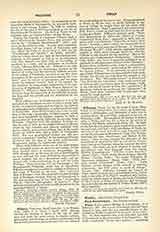

Finan, Saint, second Bishop of Lindisfarne; d. February 9, 661. He was an Irish monk who had been trained in Iona, and who was specially chosen by the Columban Monks to succeed the great St. Aidan (635-51). St. Bede describes him as an able ruler, and tells of his labors in the conversion of Northumbria. He built a cathedral “in the Irish fashion”, employing “hewn oak, with an outer covering of reeds”, dedicated to St. Peter. His apostolic zeal resulted in the foundation of St. Mary’s at the mouth of the River Tyne; Gilling, a monastery on the spot where King Oswin had been murdered, founded by Queen Eanfled, and the great Abbey of Streanaeshalch, or Whitby. St. Finan (Finn-an—little Finn) converted Peada, son of Penda, King of the Middle Angles, “with all his Nobles and Thanes”, and gave him four priests, including Diuma, whom he consecrated Bishop of Middle Angles and Mercia, under King Oswy. The Breviary of Aberdeen styles him “a man of venerable life, a bishop of great sanctity, an eloquent teacher of unbelieving races, remarkable for his training in virtue and his liberal education, surpassing all his equals in every manner of knowledge as well as in circumspection and prudence, but chiefly devoting himself to good works and presenting in his life, a most apt example of virtue”.
In the mysterious ways of Providence, the Abbey of Whitby, his chief foundation, was the scene of the famous Paschal controversy, which resulted in the withdrawal of the Irish monks from Lindisfarne. The inconvenience of the two systems—Irish and Roman—of keeping Easter was specially felt when on one occasion King Oswy and his Court were celebrating Easter Sunday with St. Finan, while on the same day Queen Eanfled and her attendants were still fasting and celebrating Palm Sunday. Saint Finan was spared being present at the Synod of Whitby. His feast is celebrated on the 9th of February.
W. H. GRATTAN-FLOOD

